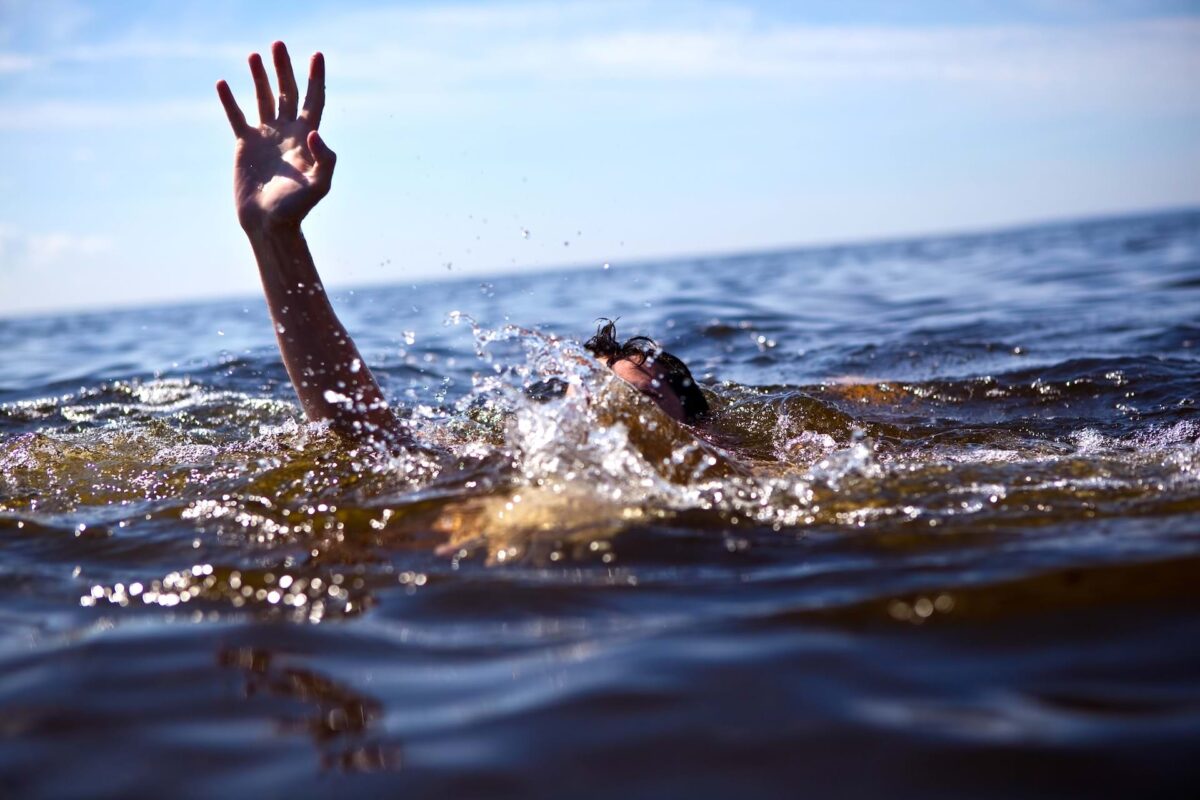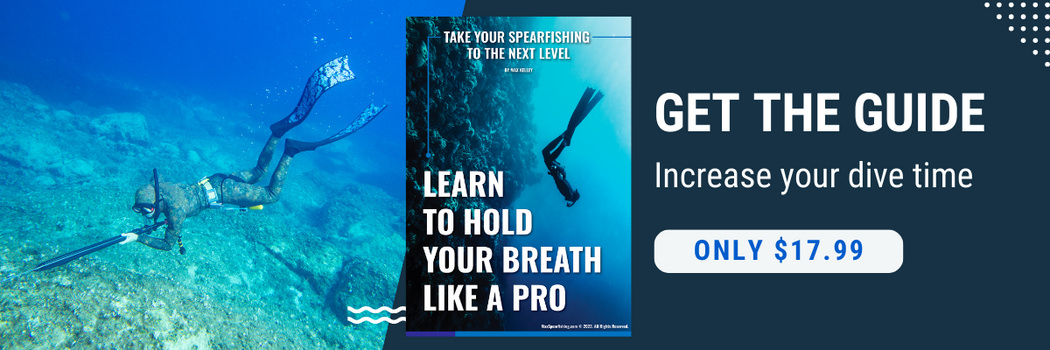No products in the cart.
Spearfishing Safety
Shallow Water Blackout: Don’t Risk It Spearfishing
When you’re spearfishing, shallow water blackout is a real risk.
Especially as you start getting better. Once you’re spearfishing in deeper water and holding your breath longer, the chances you (or one of your dive buddies) experience a shallow water blackout increases astronomically.
Because people cannot breathe underwater. As much as we’d all like to imagine we’re just like the fish we’re hunting, there’s one massive risk with spearfishing. Hold your breath too long, and you’ll black out. And that’s a risk you need to manage, so you all make it home safe from a day on the water.
Max Spearfishing is reader-supported. We may earn a small commission for purchases using our links. Click here to learn more.
Shallow Water Blackout: Don’t Risk It Spearfishing
Shallow water blackouts occur when the oxygen levels in your body drop too low (a symptom known as hypoxia). To protect itself from further harm, your body begins to shut down and as a result, you black out and fall unconscious. Experiencing it myself, it’s a little like when the doctor puts you under anesthesia. You just slip away.
But to everyone around you, it’s rather traumatic – especially if it’s their first time seeing it. Because your buddy now has the job of rescuing you, dragging you back to the surface and getting you breathing again. In this post I’d like to explain what exactly causes a shallow water blackout, the steps you can take to prevent and minimize the risk, and what to do should someone you’re diving with succumb to a shallow water blackout.
Knowing what to do and acting fast, will save their life.
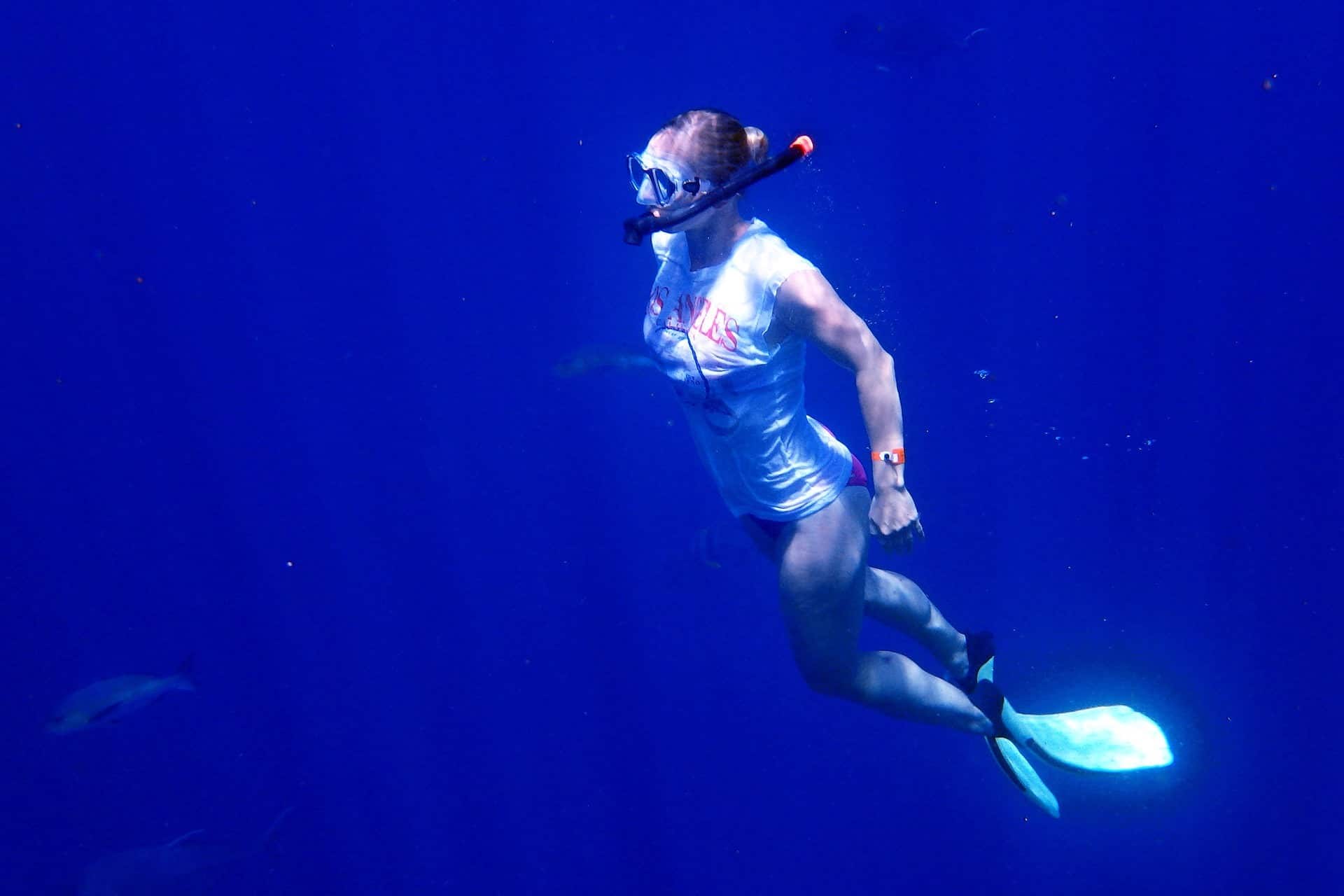
Understanding the shallow water blackout
It’s a simple cause and effect relationship which causes a shallow water blackout. When the oxygen levels in your body get too low, a blackout is inevitable. Often happening so fast you’ve not got time to react. It just happens. And while losing consciousness isn’t fatal, if prompt action isn’t taken to get you to the surface and breathing again, drowning becomes a real risk.
Most of the time, shallow water blackouts occur from a lack of knowledge. New divers aren’t aware of the risks, and they push themselves too far. But it also happens to the pros. There’s no training you can do to completely eliminate the risks of a shallow water blackout. And unfortunately, there are lives lost every year to this effect.
But there are some best practices to follow that will keep you as safe as possible while you’re spearfishing. And we’ll get to them in a sec.
The types of shallow water blackout
Many people use the term shallow water blackout incorrectly. As an overarching term that describes the act of losing consciousness underwater.
But there are actually three different types.
Static Apnea Blackout
This is the result of holding your breath for too long. If you’re tucked into an ambush spearfishing position and push past your breath-hold limit, when you lose consciousness it’s referred to as a static apnea blackout. It’s most commonly caused from hyperventilation before starting a dive.
Shallow Water Blackout
At the end of a deep dive, you’re ascending to the surface. But as the pressure reduces as you ascend, it can cause the oxygen concentration in your lungs to drop, making it harder for your body to get oxygen to your brain. If the oxygen concentration in your body is too low, you will blackout. This is what you’re most likely to experience when you’re spearfishing, and what we need to be ready to overcome.
Deep Water Blackout
The deep-water blackout is a result of pushing your limits too far, spending too long on the bottom at the deepest part of your dive. The high carbon dioxide levels in your body will cause you to black out, which is often a result of hyperventilating before a dive.
Surface Blackout
Once you’ve surfaced from a dive it’s still not totally safe. You may actually faint before you are able to take enough recovery breaths to replenish your oxygen. This risk lasts for up to 60 seconds when you hit the surface, and is one of the reasons it’s critical to have an adequate rest time between dives.

Factors that increase your risk of shallow water blackout
There are quite a few factors which increase your risk of a shallow water blackout. Be aware of all of these, and make sure you’re not making one of these mistakes while you’re spearfishing. Do your research and make sure you know your limits while you’re spearfishing, and definitely watch out for:
- Hyperventilation tricks your body into thinking it has more oxygen than it does
- Being hungry and dehydrated will reduce your ability to process oxygen
- Getting cold and hypothermic will burn more energy as you fight to stay warm
- High levels of stress and diving in adverse conditions also burns more oxygen
- Using a poor diving technique burns your oxygen faster than necessary
- Failing to take adequate recovery periods between dives
My experience with shallow water blackout
When you start swapping stories with fellow spearo’s, it’s inevitable the tales of blackouts will pop up. We’ve all been affected in one way or another, from friends who have tragically lost their lives, or blacking out ourselves when our own limits are reached.
I’ve blacked out once.
We were winding up a long day on the boat, and I was coming up for a breath with a crayfish in hand. But somehow, as I was kicking to the surface, the crayfish managed to slip from my grasp. And at that moment, I made an almost fatal mistake. Instead of focusing on it and returning to the surface, I cancelled my ascent to chase my prey.
With just a few kicks, I was back to the bottom, and perhaps 10 seconds later, the crayfish was back in my grip. At this point, my lungs were screaming, so I sprung off the bottom in a race back to the surface, and that’s when my memory began to fade. I remember everything fading out and feeling weightless in the water. It was almost like being detached from all that was happening, and then it all went black.
I woke up on the surface over a minute later.
My buddy saw me double down on my dive and was watching closely, and when I started to spasm and sink, he was right there to come to the rescue. Pulling me to the surface and getting me breathing again with rescue breaths, he still jokes that it was a ploy to make out, and my wife now calls him my “boat” girlfriend.
But all jokes aside, that was a scary situation. Without his fast action, I would have drowned.

How to prevent shallow water blackout
No one plans to black out underwater, and while you cannot eliminate the risk entirely, there are a few things you can do to minimize the chances you’ll black out while you’re spearfishing. Follow these guidelines, and you’ll be extremely unlikely to have a shallow water blackout.
Shallow water blackout prevention tip #1: Do not hyperventilate before a dive
It seems logical, right? You want to last longer underwater so you take a series of quick, rapid breaths before you dive, “filling” your lungs with oxygen. Right? Wrong.
Hyperventilation is one of the biggest causes of shallow water blackouts as it flushes out the carbon dioxide from your bloodstream. Carbon dioxide is one of the triggers your body uses as a warning system when you need to breathe. Without this, you’ll think you’re totally fine, and then suddenly bam, you’re unconscious. It’s a condition known as hypocarbia, and results in you blacking out before you even feel the need to breathe.
Shallow water blackout prevention tip #2: Gradually increase your dive times
We all want to push our limits and dive deeper and longer, but you need to progress gradually or you risk going too far, too fast. And that’s dangerous.
The best plan here is to follow your static apnea tables, and ensure you’re well accustomed to spearfishing for certain times and depths before trying to go further. I’d also recommend listening to your body, if you’re a little tired, or run down, you’re not going to be able to dive as deep or for as long as you may have on your last dive. If something doesn’t feel right, pull back. There’s no shame in a gradual progression as you learn how to spearfish.
Shallow water blackout prevention tip #3: Take care of yourself
I touched on these earlier, but if you’re feeling unwell, tired, dehydrated, hungry, stressed or even battling a bit of sickness, your dive times will suffer.
The key is to realize this, and ensure you’re taking care of yourself. Have a decent meal before you go diving, and don’t forget to drink enough water. Being dehydrated thickens your blood making your heart work harder, and being hungry means low blood sugar that further increases your blackout risk. Take care of yourself, and if you’re trying to go spearfishing at anything less than your 100%, don’t push your limits. Take it easy.
Shallow water blackout prevention tip #4: Dive without a snorkel
If you’re still spearfishing and holding your snorkel in your mouth, I hate to tell you this, but you’re doing it wrong. Your snorkel is just for breathing on the surface. That’s it.
Never dive with your snorkel in your mouth. Not only will it require a rather forceful breath to clear when you hit the surface again, it can get in the way if you blackout. You see, pushing out this last bit of air can even result in a blackout (it’s a surface blackout), and often when you pass out your muscles can spasm. If your jaw happens to clench with your snorkel locked in it, your buddy will not be able to resuscitate you with rescue breaths.
Shallow water blackout prevention tip #5: Don’t look up as you ascend
The only way you should be tracking your depth is with your dive watch. Looking upwards distorts your proportion, and can add stress if you’re particularly deep.
Not only that, tilting your head up as you ascend can decrease the blood flow to your brain, increasing the chances you’ll experience a shallow water blackout. I’ve found that since I stopped “chasing the surface” and instead tried to plan my dives properly, I’ve been much calmer underwater, which burns less oxygen as well.
Shallow water blackout prevention tip #6: Slowdown in the last few meters
Probably the greatest risk for us going spearfishing is ascending the last few meters, as the changes in pressure can trigger an oxygen deprivation in your body.
The trick, is to make your last few meters of your ascent as slow as possible. Hopefully you’ve already managed to get your buoyancy in check (so you float no matter what in the last few feet before the surface). This way if you do black out, it’s much easier for your buddy to rescue you. It also allows you to slow down your ascent, I’m at the point now I no longer even fin to the surface, instead just letting my buoyancy take me up.
Shallow water blackout prevention tip #7: Be ready to drop your weights
Your weight belt is a piece of spearfishing gear to help you hit the bottom, but if you ever get into even the slightest bit of trouble underwater, don’t hesitate to drop it.
Your buddy can always retrieve it later (or if it attaches to your float line you can simply pull it up from the surface). It’s important you’ve got a quick-release styled weight belt, and whilst you may not want to risk losing it, a few bucks for a new weight belt is far cheaper than your life. If you experience any symptoms of shallow water blackout, drop the weights and let your buoyancy take you back to the surface.
Shallow water blackout prevention tip #8: Never go spearfishing alone
I’ve broken this rule on occasion, as I’m sure many readers have too, but it’s an important one. Without a buddy, you will die if you experience a shallow water blackout.
If no one is watching your back, it’s game over. I’ve done more than my fair share of solo dives, and if I can choose, I’ll always opt for a buddy. They can help spot more fish from the surface, and if I know they’re right there I will push myself much harder than I would alone. That extra time underwater has resulted in some of my best catches to date.
Shallow water blackout prevention tip #9: Have an adequate recovery time
There’s a rough rule for spearfishing that says you should spend at least twice the time on the surface as your last dive. Follow this rule.
That means if your last dive lasted a minute and a half, you should spend at least three minutes recovering on the surface before trying another descent. You need time to replenish the oxygen stores in your body, and to fully recover before attempting to dive again. One of the easiest ways to manage this is with a piece of spearfishing equipment known as freediving watch, I’m in love love with the Suuntu D4F freediving watch. It tracks all of my dives, warns me when I’ve been under too long, and also dictates my recovery times. It’s awesome.
No products found.
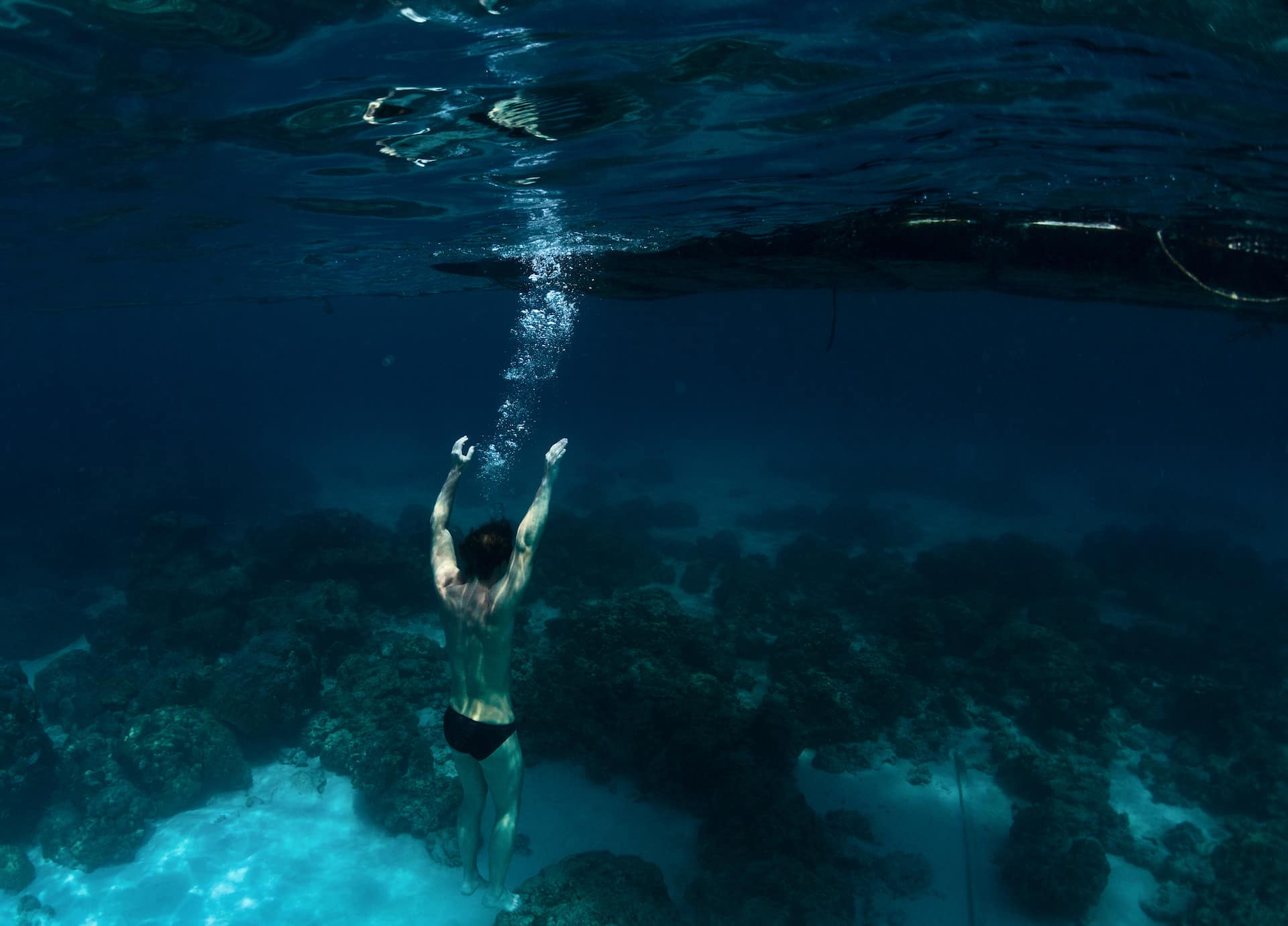
Spotting a shallow water blackout
The slang term for a shallow water blackout is the samba. And for good reason.
A diver who is in the final stages of hypoxia (right before they black out) will experience convulsions and jerky movements that resemble moves from the dance of the same name.
- Kicks become erratic.
- Hands move involuntarily.
- The back will jerk and spasm.
If you notice any of these as you’re diving, you need to get to the surface fast. If it’s your dive buddy, start preparing yourself to duck-dive down and save them. Once movement ceases and you see a large exhale of bubbles, they’re blacked out.
Without your help, they will drown.
But there are a few tell-tale signs you may notice in yourself before you experience the samba yourself. Once you notice any of these symptoms, it’s time to return to the surface. And do it fast. If these start manifesting, you may already be too late.
- You hear a ringing in your ears
- You notice your field of vision shrinking
- You find your vision getting blurry
- You experience feelings of euphoria
- You find yourself getting confused
- You feel “pins and needles” in your body
- You start mumbling incoherently
- You drop your speargun and can’t control your hands
All of these are signs of oxygen deprivation, and a shallow water blackout is the inevitable next step.
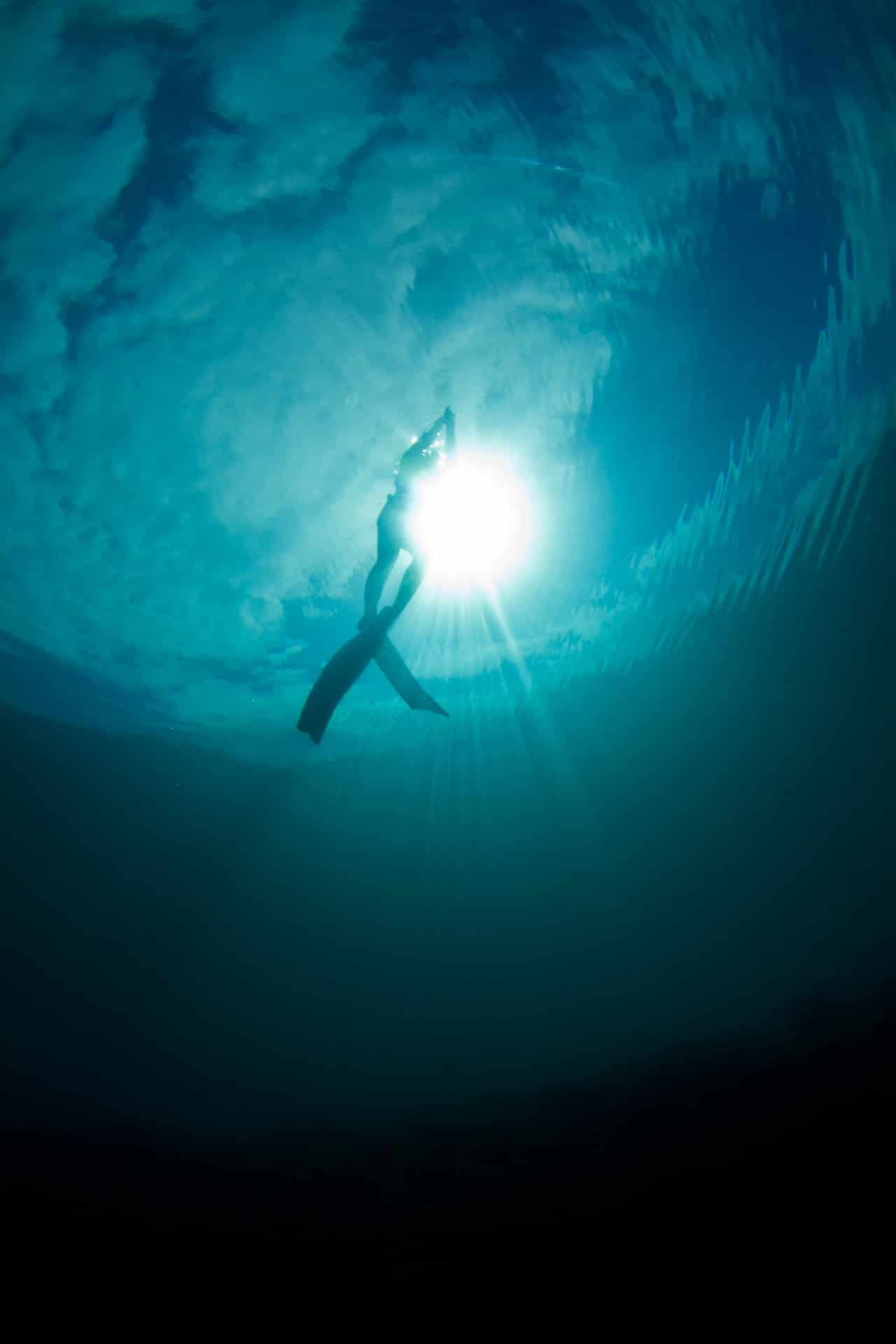
Rescuing a diver from a shallow water blackout
Right. Now here’s the most important part of the entire article – how to rescue someone who is experiencing a shallow water blackout.
You may notice that your dive buddy has…
- Started convulsions or twitching randomly
- Started sinking deeper without movement
- Stopped swimming for no apparent reason
- Eyes rolled back and a floppy neck and arms
- Surfaced with very blue or purple lips
- Exhaled their last breath and gone slack
It’s your job to pay attention as they’re spearfishing. If they black out, here’s what you do.
Get them back to the surface
But not only do you need to get them back, you’ve got to stop them involuntarily drinking (or inhaling) any excess sea water.
My preferred method is almost like a cuddle from behind, as you wrap your left arm underneath their armpit and use your left hand to keep their mouth shut. Your right supports the back of their neck, pushing their head forward into your hand, though this isn’t necessary as you can also rest their head on your chest.
Then you simply kick and ascend like normal.
The other is when you’re facing your buddy. Reach forward with both hands, using your left to close their jaw, reaching around with your right to support their neck. This position gives you a little more room (you can push them away from you slightly if you need more space to fin), but it does require both hands.
What’s critical though, is not the rescue position you use, but that you get them to the surface as fast as possible. If all you can reach is their fin, and you grab it and drag them up by their foot, so be it. Get them back to the surface.
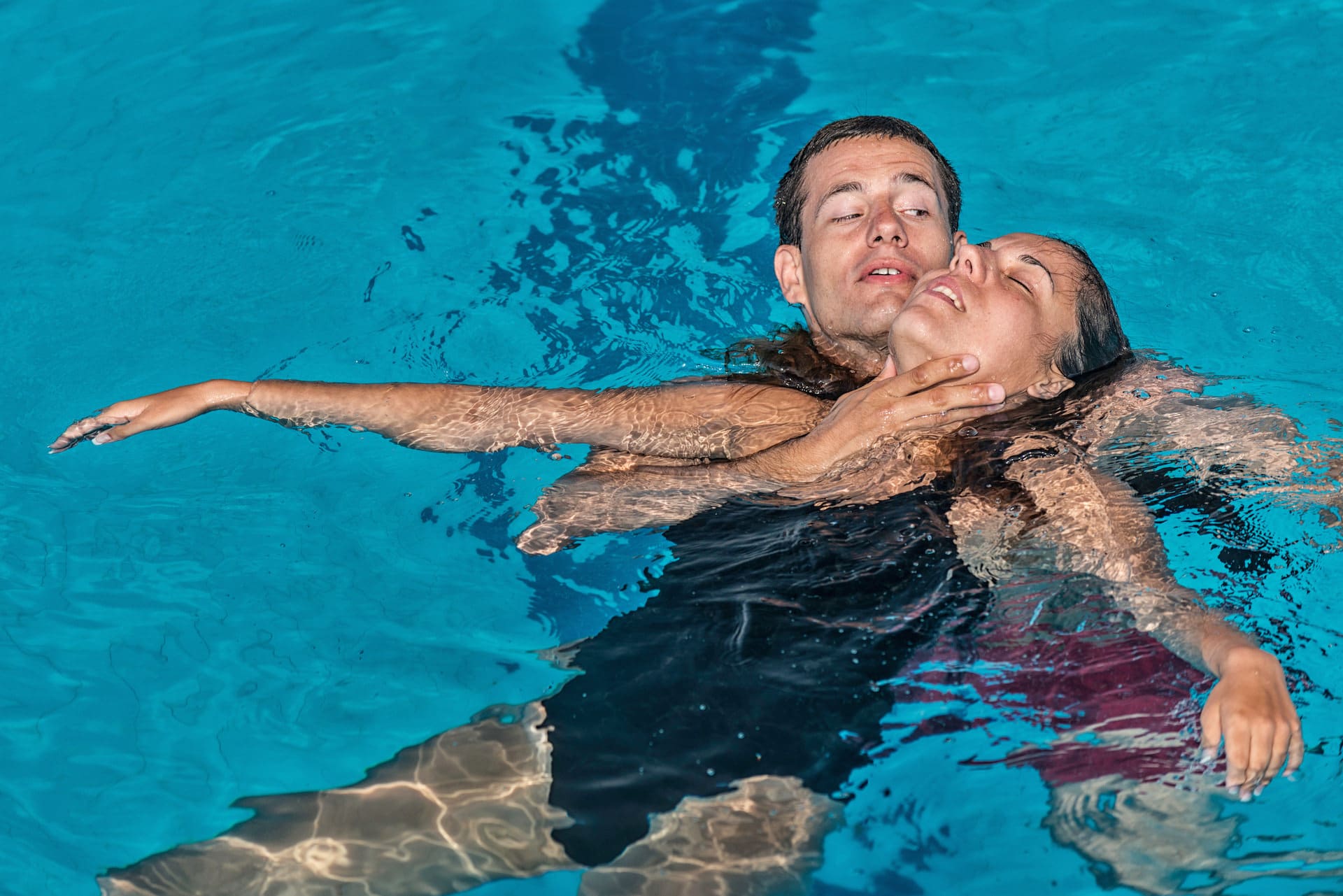
Secure the diver on the surface
If you haven’t yet dropped their weight belt, now would be a good time to do so. You want to get them secured on the surface so there’s no chance they slip back underwater while you’re getting in position to wake them up. You want them floating on their back, and once they’re stable remove anything blocking their face, like their snorkel and mask.
If your buddy starts to come around, grab your float and give them something to hang onto while they catch their breath on the surface. This is one of the most important reasons to have a decent float as part of your spearfishing equipment. I’m a big fan of Spearfishing World’s compact lifeguard float.
No products found.
Use the blow, tap and talk
Just because they’re not responsive, doesn’t mean you need to start rescue breathing immediately. What you want to communicate is that they’re now safe on the surface and they can begin breathing on their own.
Position their head at a slight incline to open their airway, and then…
- Take a breath, and blow hard onto the diver’s face.
- Tap them gently on the cheek or shoulder, to elicit a response.
- Talk to the diver, using their name and reassuring them it’s okay to breathe.
When you blackout your hearing is the first thing that will go, and the first that returns as you wake up. The technique of blow, tap and talk is often enough to get a blacked-out diver to start breathing again.
Start rescue breathing
If you’re not able to elicit a response after 10 to 15 seconds of the Blow, Tap, Talk, you need to start rescue breathing.
But don’t do it mouth-to-mouth like you see in the movies. If their jaw has spasmed and clamped shut it will be impossible. So, position your mouth over their nose, create a strong seal, and give two strong rescue breaths. This should elicit a response.
Start CPR
Your last chance to wake them up is CPR. But for it to work you’ll need a hard surface. Like the deck of your boat, or getting them back to dry land. Follow the rule of two rescue breaths for every 8 fin kicks, to ensure they’re not starved of oxygen, and start chest compressions as soon as you can. The rule of thumb is 30 chest compressions to two rescue breaths, continuing until they revive or the paramedics arrive.
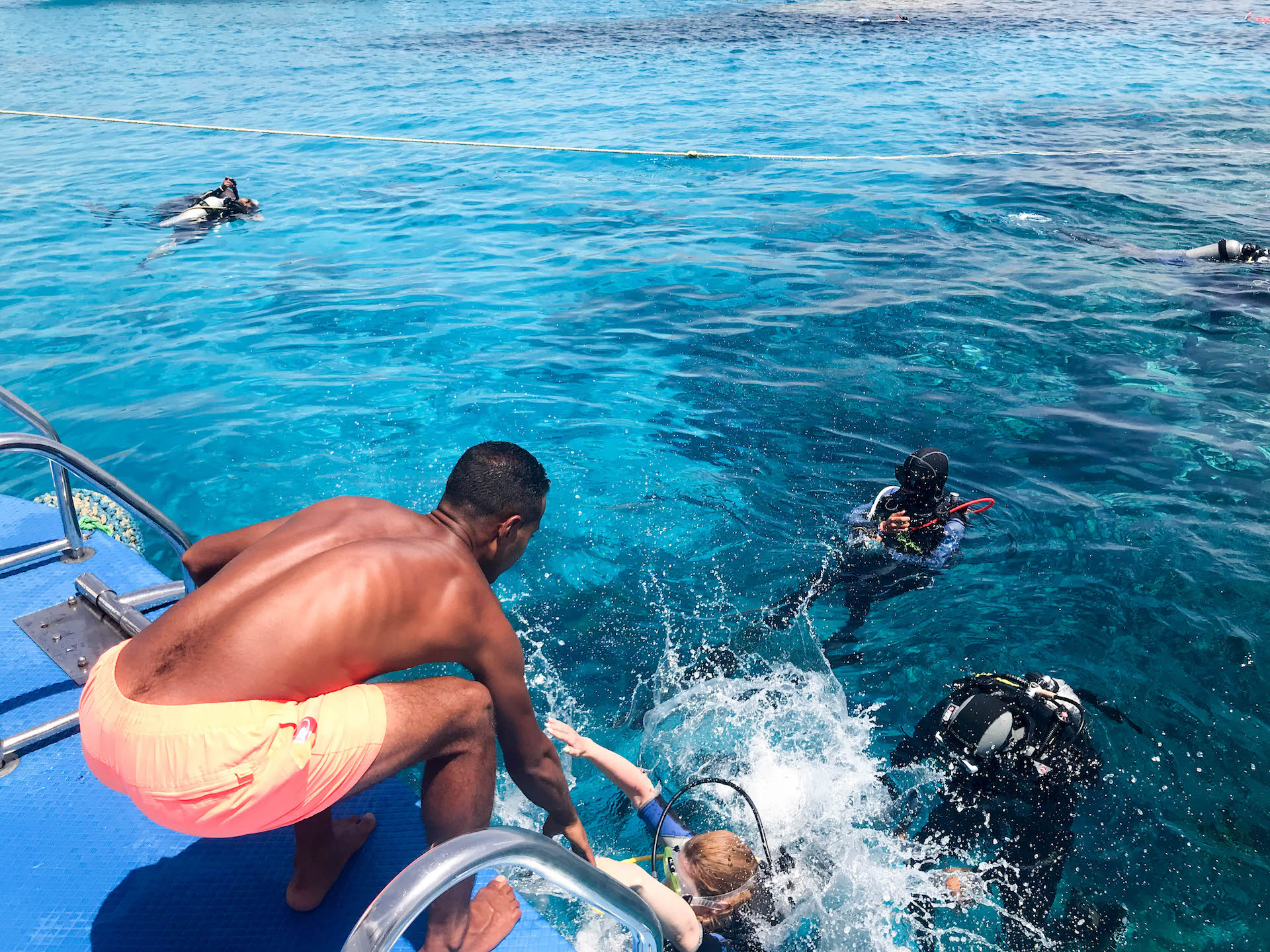
The aftermath of a shallow water blackout
After reviving your dive buddy, you may notice they’re extremely agitated. One of the repercussions of oxygen deprivation is aggression, and they may become angry that you “ruined their dive” or some other notion. Give them space, and let them calm down.
Once they’re stable, it’s important to call an end to your spearfishing session, or at the very least have them sit out. It took me a full week to recover from my blackout, so listen to your body and don’t try to rush back into it. If you’re not fully recovered, your chances of having a follow up blackout are increased exponentially.
I’d also recommend having a small tank pf pure oxygen on your boat, or in your dive supplies. There’s nothing better to revive someone suffering from a shallow water blackout than having them breathe pure oxygen for 10 to 15 minutes. I’ve got a specialized tank of pure oxygen on the boat just for emergencies like these, and thankfully I’ve not yet had to use it in a real emergency (though it did hold up fantastic in our tests).
No products found.
Don’t let the risk of shallow water blackout stop your spearfishing
Seeing someone go through a shallow water blackout can be frightening, but don’t let it stop you from improving your spearfishing game. With the right training, and a little awareness, you can ensure you’re spearfishing safely, no matter what.
My advice is to take it slow, and once you start wanting to push your limits, take it gradually using static apnea tables to better discover your own tolerance levels in a controlled environment (with decent supervision). Or take a freediving course. There’s so much you can learn from the professionals, don’t be afraid to reach out for help to take your spearfishing to the next level. And I’m here to answer any questions you need too.
Happy spearin’

